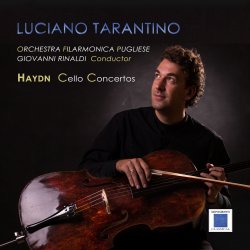
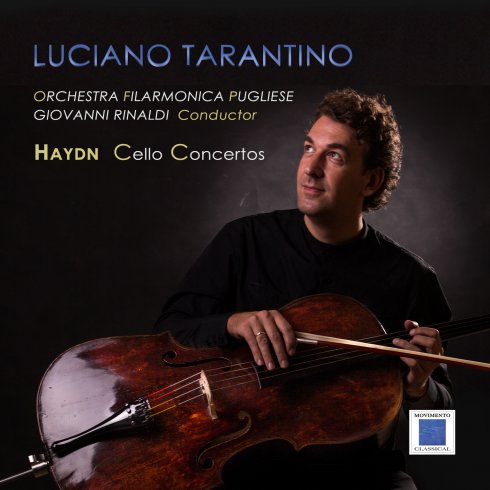
Haydn - Cello Concerto's
Programmazione Puglia Sounds Record 2023
FONDO SPECIALE CULTURA – CALENDARIO UNICO REGIONALE 2023
OPERAZIONE FINANZIATA A VALERE SUL “Fondo Speciale per la Cultura e Patrimonio Culturale L.R. 40art.15 comma3”
#WeAreinPuglia #PugliaSoundsPlus #TeatroPubblicoPugliese
Franz Joseph Haydn (31 March 1732 - 31 May 1809) with Mozart and Beethoven represents the expression o! the classica! Viennese style that characterizes the years between 1750 and the first decades of the 1800s, the socalled "first Viennese school".
Haydn's artistic personality developed as Kappelmeister at the court of the Esterhàzy princes, first in the service of Paul Anton, then of his brother Nikolaus. lt was Nikolaus himself who, wanting to give new vitality to his family, decided to rehabilitate an ancient family residence , isolateci and in a state o! abandonment. The Esteràza residence thus became the driving torce of a vita! court thai had the ambition of equaling the most prestigious European courts. Nikolaus had a great passion tor music, he played the celio, violin and harpsichord, and was a great fan o! the barython, a particular viola da gamba equipped with resonance strings. The origin of the writing of these two concerts is therefore the intense relationship of friendship, even before thai of service, which linked the prince to the Austrian compose,.
For almost thirty years Haydn will beat the service of Prince Nikolaus (1761- 1790) and, despite his isolation and forced sedentary lifestyle, his musical writing will always be in perieci balance with the current style; "I was forced to become originai", as he himself said of his composing.
During his long lite Haydn experimented with every musical genre, so much so that he was given the nicknames "father of the symphony" and "father of the string quarte!". Always master of his music, Haydn already had the opportunity to publish it independently during his lifetime, becoming the most famous compose, of his time, and his music circulated widely throughout Europe.
With Haydn the sonata form became the form capable of interpreting the aesthetic ideals and cultura! ferments of his era, far !rom the preromantic and romantic anxieties thai would soon change the aesthetic paradigm of music in Europe. The formai balance combines individuai expression and objectivity of the structure, the tonai harmony matured in the rationality of the Enlightenment finds a new technical depth in writing, with a significant recovery of counterpoint as a means o! expressive intensification within thai "discursive" and amiable taste typical of Viennese classicism.
The complete catalog o! his works was compiled between 1957 and 1978 by the musicologist Anthony von Hoboken.
Concertos No.1 and No.2, in C major and D major respectively, were written almost twenty years apart, both while Haydn was in the service of Prince Nikolaus Esterhàzy.
The Concerto N.1 in C major, in the classic three movements, Moderato, Adagio and Allegro tanto, is cataloged as Hob. Vllb/1, and was composed between 1761 and 1765.
The originai manuscript was long thought to have been lost, although its authorship was never questioned, as Haydn had written the beginning ol the main theme ol the lirst movement in his draft catalog ol 1765.
The manuscript originai was lound in 1961 by the musicologist Oldlich Pulkert at the National Archives in Prague. The concerto was written lor his lriend Joseph Franz Weigl, then lirst cellist ol the Esterhàzy Orchestra. lt was a small orchestra comprising between 1O and 25 strings, two horns and two oboes, as foreseen by the staff of the court orchestra in those years, then subsequently expanded, and the treatment ol the orchestra demonstrates how Haydn was already master ol instrurnental writing.
The solo cella part reflects the idiomatic style that was increasingly emerging in musical compositions in the second hall ol the 18th century, taking into account, when composing, the specific timbrai, expressive and technical characteristics of the instruments tor which the piece is intended. In fact, the concerto, although technically less virtuosic than the one in D, offers the so- loist ampie space lor musical expressiveness and technical brilliance and rnastery, favoring the high register of the instrument, which at the tirne was stili undervalued in solo writing.
On a formai level it reflects both the ritornello form of the Baroque concerto as well as the emerging structure of the sonata lorm, particularly in the opening allegro. As in the baroque concerto Grosso, the accompanying
ensemble is relatively small: strings, two oboes and two horns. lt is possible that Weigl was the only cellist in the Esterhàzy Orchestra when Haydn composed the concerto, as there is only one cella line in the score, marked alternately "solo' and 'tutti' . However, there is also a continuous bass line, which could have been played by another cellist, or by Haydn himself on the harpsichord, or by a double bass player.
The Celio Concerto No. 2 In D major, also in three movements, Allegro moderato, Adagio, Ronda. Allegro, op. 101 was composed in 1783 far Antonin Kraft, cellist of Prince Nikolaus' Esterhàzy Orchestra.
The concert was published only in 1804 by Johann André, with the tille "Concerto tor cella with orchestrai accompaniment composed by Joseph Haydn. Opera 101. Edition !rom the author's originai manuscript' . Doubts of authenticity have also been raised tor this concert, with the hypothesis that it may have been Kraft himself, dedicatee of the work, who composed it. However, alter the discovery of Haydn 's autograph score in 1951, most experts are inclined to consider the work authentic.
The concerto is more relaxed and lyrical than the concerto in C major and technically more demanding lor the soloist.
Haydn's style here appears more mature, the dialogue between soloist and orchestra leaves ampie space lor the virtuosity ol the soloist, especially in the first movement and in the interventions ol the final ronda. The harmonic discourse surprises us with dissonances able to express the complexity of the reflection that Haydn had reached in his mature phase, in which the language enhances the uniqueness of the individuai instruments, each in its most suitable sound environment, in a discourse of perfect internal dialectical interrelation.
Of note in Luciano Tarantino's recording is the presence of the soloist's ori- ginal cadences, in line with the musical practice of the time, when the cadences were not written by the compose, but entrusted to the improvisational flair and technical and musical characteristics of the performer. Tarantino inserts them in the first and second movements of both concerts, a detail worthy of note given that it is a now obsolete practice, and which certainly contributes to enriching the value of the Apulian cellist's research.

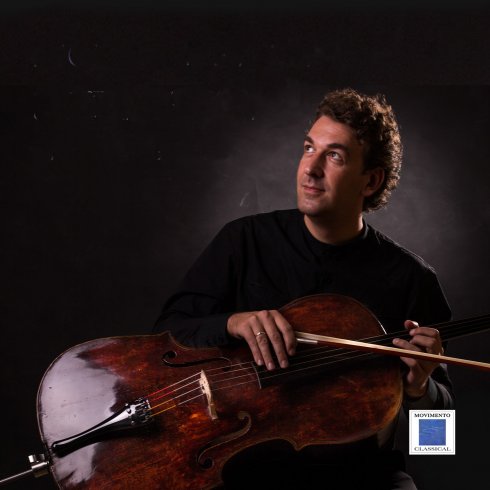
Luciano Tarantino
Luciano Tarantino, Italian cellist, born in 1977, began studying the cello at a very young age, attending masters such as Ormezowski, Geringas, Mork, Monighetti and Rostropovich. At the age of twenty, already first cello in various Italian orchestras, he plays with conductors of the caliber of Mazeel, Sinopoli, Tate, Gergiev, Pretre, Noseda, Petrenko and De Burgos. A role that he will soon abandon to devote himself to chamber and solo music, which leads him to perform in important chamber and cello festivals, in cities and theaters such as Opera Garnier in Paris, Royal Theater in Madrid, Kabukiza in Tokyo, Parco della Musica Rome, Sala Piatti Bergamo, and Moscow, Vilnius, Stockholm, Istanbul, Beijing, Seoul, Strasbourg, Lugano, Johannesburg, Beirut etc. He records numerous albums for Movimento Classic, DaVinci, Brilliant, Farelive, FedoraMusic, KzMusik, Stradivarius, etc. which allowed him to win the nomination for the "Cello Foundation of New York", as the only Italian. He is the artistic director of the Note di Notte Festival in Bari.
He is a cello teacher at the Conservatorio “L. Canepa” of Sassari. He plays the precious Italian cello "Carlo Antonio Testore 1736”.
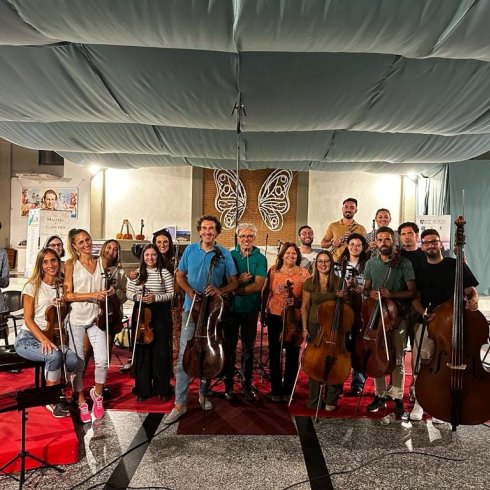
Philharmonic Orchestra of Apulia
The Philharmonic Orchestra of Apulia (OFP from the Italian Orchestra Filarmonica Pugliese), born in Molfetta (Bari) in 2013 and immediately sponsored by the Region, the only “Class A Instrumental Complex” recognized by the FUS in Puglia, has performed in the most important theaters and places of cultural interest in the cities of Bari, Brindisi, Lecce, Foggia and in the main municipalities of the BAT, crossing the regional borders to be particularly appreciated in April
2019 at the Teatro Argentina in Rome. The sparkling OFP team is permanently on the billboards of the major local Bodies and Foundations, sponsored by
MIBACT: CIDIM (Italian National Music Committee), Pugliese Public Theater, Curci Culture and Music Association of Barletta, Camerata Musicale Salentina in Lecce (LE), Fondazione Nuovo Verdi Theater of Brindisi (BR), VM Foundation Valente di Molfetta (BA), Auditorium Association of Castellana Grotte (BA), Aldo Ciccolini Academy Foundation of Trani (BAT), “Nino Rota” Association of Brindisi; broadcast live concerts for RAICinema and the Italian Cultural Institute in Amsterdam and received the patronage of the National Academy of Santa Cecilia for the "Gran Galà Beethoven" project for the cycle of concertos for piano and orchestra composed by the genius of Bonn. OFP has collaborated with renowned musicians as Giuseppe Gibboni, Luciano Tarantino, Corrado Giuffredi, Pierluigi
Camicia, Maria Pia Piscitelli, Nicola Hansalik Samale, Pietro Brogonovo, Marco Misciagna, Alfonso Soldano, Evgeny Starodubstev, Fabrizio Dorsi, Giuseppe La Malfa, Roberto Corlianò, Francesco Defronzo, Sklodowsky Bartosz, Anna Geniushene, Mai Koshio, Stefania Argentieri, Leonardo Colafelice, but also with non-classical artists such as Ronn Moss, Stef Burns, Antonella Ruggero, Andrea Braido and Gianni Ciardo.
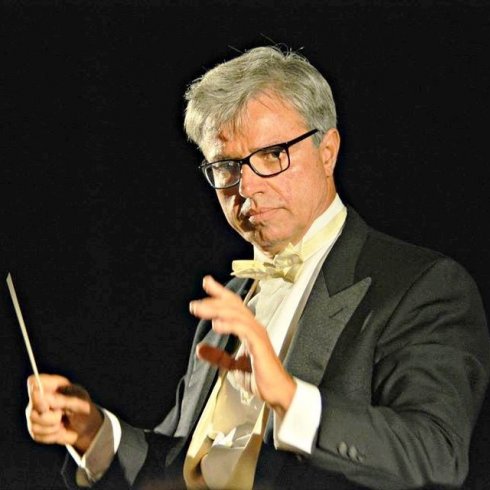
Giovanni Rinaldi
Studied composition and musical direction with R. Duarte and J. Kalmar, graduating from the Pescara Academy of Music in 1999; in 2020 he graduated in orchestral conducting at the U. Giordano conservatory in Foggia with Daniele Belardinelli.
He has conducted the Plovdiv and Shoumen Orchestras (Bulgaria), H. Swarowsky, the Pescara Chamber Orchestra, the Kiev Symphony, The Satu Mare Philharmonic (Romania), Capella Cracoviensis (Poland), Petruzzelli Theater and Bari Metro, Green Theater of Salerno. He has conducted soloists such as Giuseppe Gibboni, Alessandro Perpich, Carlo Torlontano, Luciano Tarantino, Vito Paternoster, Pierluigi Shirt, Massimiliano Pitocco, Massimo Mercelli, Chiara Taigi and the Div4S vocal quartet, which accompanies Andrea Bocelli. For some years he was assistant to M. Daniel Oren. He has also conducted numerous operas, including Don Pasquale, Tutti in Maschera (by C. Pedrotti), Barber of Seville, La Traviata, Aida, Tosca, La Bohème, Cavalleria Rusticana, Madama Butterfly, Pagliacci and Rigoletto. He teaches double bass at the Bari Conservatory of Music.
